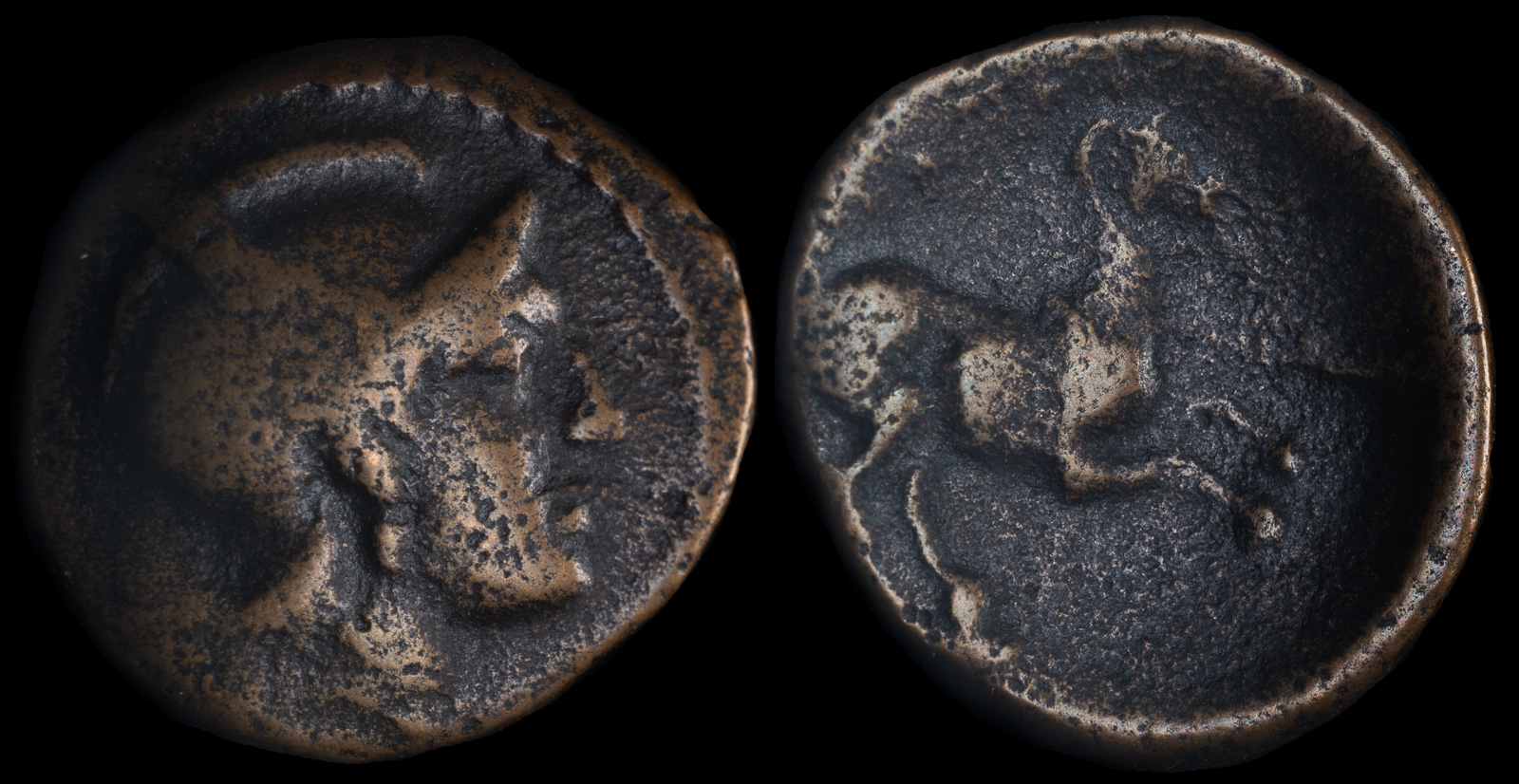
Mid 4th century BCE
Æ 3.63g, 16mm, 12h
Head of Herakles to left, wearing lion skin
Forepart of horse to right, with head lowered; Σ-KO ΦΠA around.
Rogers 541; BCD Thessaly I 1337; BCD Thessaly II 743.1; HGC 4, 616
Ex J. Greiff Collection
Ex Roma
Skotussa was the birthplace of a Polydamas, though it appears not the one referenced by Homer who fought with the Trojans. This one would slay lions “as if they were sheep” and outrace chariots with winged feet. He also held up the crumbling roof of a cave, which if this is the same story I remember reading, killed him.
In the Aristotelian Corpus, it is written
In Scotussae in Thessaly they say that there is a little spring, from which a kind of water flows, which quickly heals wounds and bruises both of men and beasts, but if one puts a log of wood into it without completely crushing it, but only breaking it in half, it grows again and returns to its original state.
In 367 BCE, most of the inhabitants were slaughtered by Alexander of Pherai. He summoned its citizens to an assembly, then had his archers and slingers massacre them. The children he auctioned off the pay the mercenaries who butchered them.
Nevertheless, the city slowly recovered from this disaster, and was later the site of two important battles – between Thebes and Alexander of Pherae in 364 BCE and between Philip V and the Romans in 191 BCE.

ca. 3rd century BCE
Ae 19mm, 5.3gms
Obv: Helmeted head (Ares or Athena) right
Rev: Horse prancing right
SNG Copenhagen 258, BMC 5